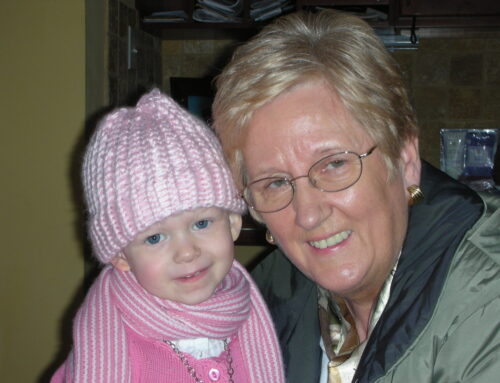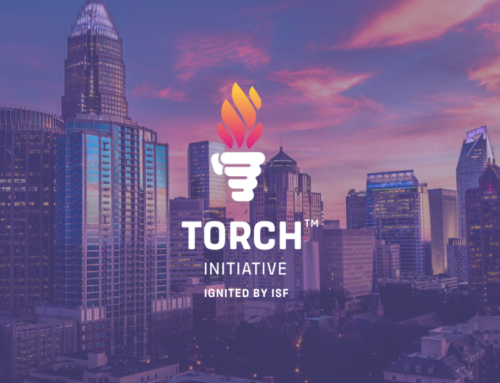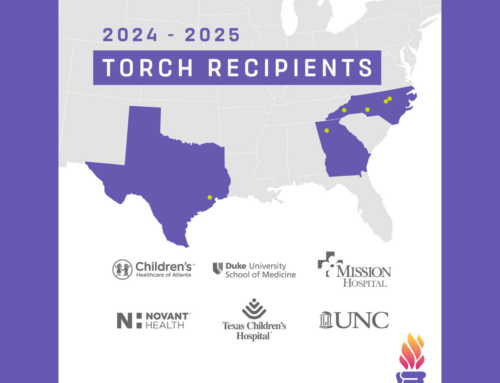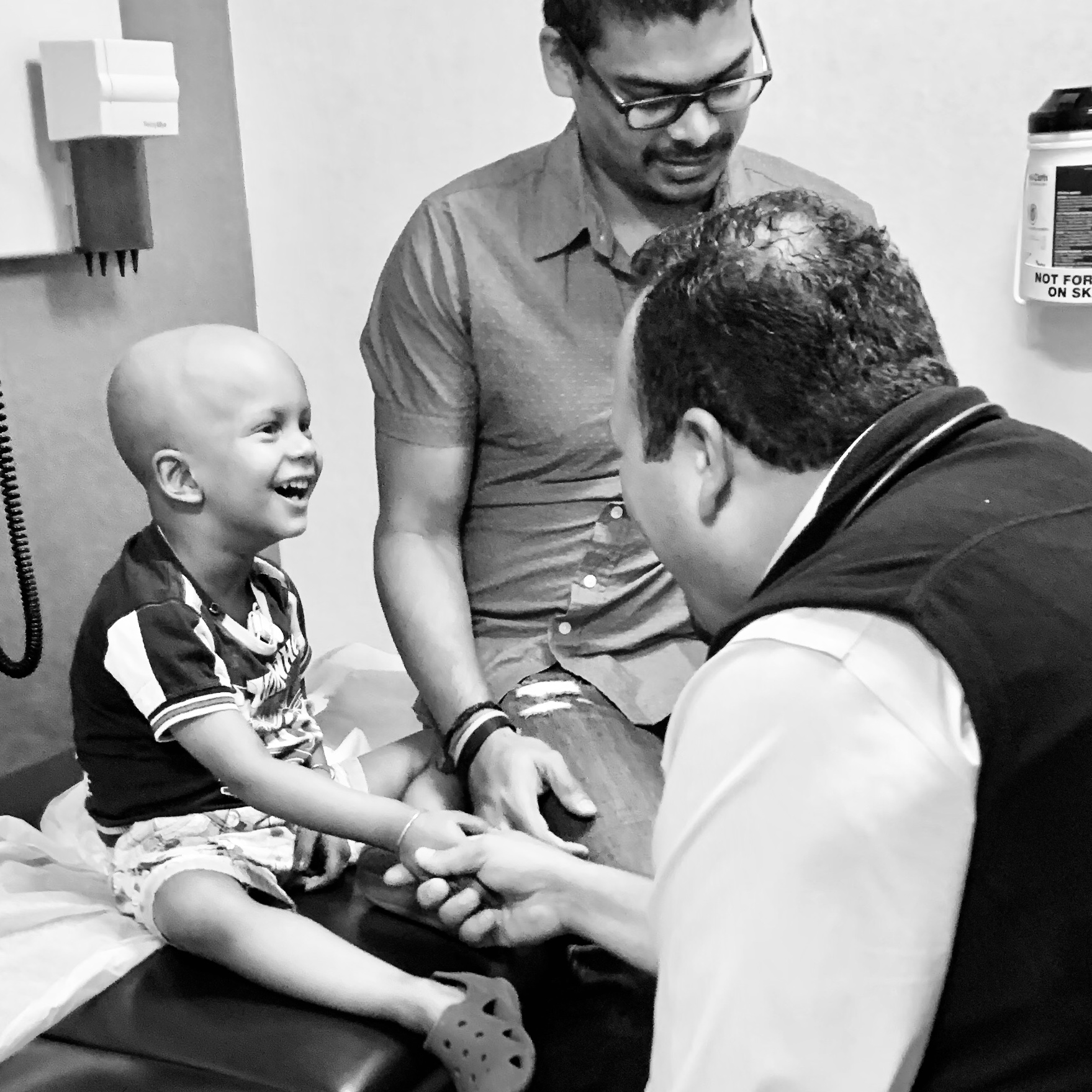
Through My Eyes: Behind the Scenes With Charlotte Pediatric Oncologist, Dr. Oesterheld
Through My Eyes is a series in which those affected by childhood cancer share a behind-the-scenes look into what it’s like to be in their shoes. Read every perspective. Become aware and donate to help create solutions for kids fighting rare pediatric cancer.
- Perspective: Pediatric Oncologist
- Name: Dr. Javier Oesterheld
- Hospital: Levine Children’s Hospital
Invested day in and night out in kids fighting cancer and their families, Levine Children’s Pediatric Oncologist, Dr. Oesterheld, took over on our social channels (Instagram & Facebook) on 9/17/19 to give behind the scenes thoughts and views into being a pediatric oncologist. He is passionate and he is real. Dr. O is dedicated to
Meet Dr. O
I’m Dr. Javier Oesterheld, Dr. O for short. I have both the best and worst job in the world. I’m the medical director for our pediatric hematology/oncology/BMT program at Levine Children’s. It is so hard at times to be a pediatric oncologist and be a part of the worst days of a family’s life. Telling a parent that their child has cancer never gets easy. In some ways though, I’m happy to be the one sharing the news because I want the family to know how much we truly care. It’s an honor to be part of their journey throughout the good times and the bad. It’s a privilege to be trusted to provide this care. And it truly is the best job in the world when we get to see a patient ring the bell to celebrate their end of treatment.
It’s hard to describe the emotions I feel when patients come back for appointments looking healthy and strong. They’ve grown hair, they’ve grown taller, they are much more energetic…they look like different kids. But their fighting spirit, personality and strength is still the same as when they were sick in a hospital bed. Kids are resilient, man, and it’s pretty awesome.
Because we walk alongside patients and families during some of the most vulnerable times of their lives, we grow very close. This may sound cliche, but it’s true: they become family. I have a beautiful wife and two amazing sons of my own…and a whole office full of patients who are also part of my family. This isn’t just a job. I can’t simply leave work at work when it’s time to go home. And nor do I want to, as I believe true empathy is a huge attribute in being a successful pediatric oncologist. I truly care about my patients, and I feel the wins and losses alongside their families. On the especially bad days, my world stops. When I get home, the only thing that helps me cope is hugging my own boys.
I’d be rich if I had a nickel for every time someone said “oh wow, that must be so sad” when I share my profession. So what did make me decide to pursue medicine, specifically pediatric oncology? Growing up, I knew I wanted to be a pediatrician – no question there. I thought for a while that I wanted to be a pediatric neurologist. And then when I met this one kid in my residency – it just clicked for me. He was a teenager who was scheduled for a leg amputation the next day. I sat with him all night just talking and listening, and when I went home, I told my wife that I thought pediatric oncology was my calling. When I did my hem/onc rotation the following month, my thoughts were confirmed and I never looked back. Here we are, 18 years later. If you see a child go through cancer, you’ll be moved forever, and that’s what keeps me going day in and day out.
Painful Procedures
One of the worst parts of my job is putting a patient through painful procedures, especially younger patients that may not understand why. Ultimately, everything we are doing is to try to save their life – and I remind myself of that on a regular basis. I remind the parents of that too, as it is so hard to watch your child experience pain throughout treatment. A big focus of pediatric oncology is making everything as painless as possible, and I am proud that Levine Children’s puts such an emphasis on this. For example, we have numbing cream and cold sprays that put on in advance of

But perhaps the best “tool” we have are child life specialists who are specially trained to help with the psychosocial aspects of a diagnosis like cancer. Paige is our child life specialist in our outpatient office, and Sharon and Andrea are our child life specialists on the oncology floor in the hospital. They will come to any procedure big or small and provide age-appropriate education so kids understand what is happening. The unknown is much scarier!. Child life specialists even help the kids perform the same procedure on a stuffed animal and make a plan with the patient to give the patients as much control as possible. They also provide distraction, so the child can focus on an ipad game or bubbles or whatever they like, instead of focusing on their procedure on the other side of the table. This helps immensely.
No matter what, our patients are always brave. And we always reward bravery. In working with child life, we’ve learned that the most effective way to do this is simply by positive praise! Sometimes we use tangible things like prizes, but we really want to empower these kids, and they respond really well to this. The whole team gets involved – from myself and other
BMT With a Little Bit of Freedom

Just last week, we officially opened our expanded BMT and cellular therapies unit. It is a beautiful new space, right on the 11th floor under the watchful eye of our blood and marrow transplant team. We now have 8 specialized rooms (previously 4), and my favorite part of the new space is that our patients no longer have to stay IN their room for their entire admission. The entire unit, including all patient rooms, hallways
When a child has a BMT or other transplant of some kind, we first give them an extremely high dose of chemotherapy that wipes out their immune system. That means the tiniest little germ can make these little patients extremely sick. To keep them healthy, they have to stay in the hospital until their immune system “grows” back, which can be anywhere from 2-6 weeks after transplant. Previously, they had to stay in their hospital room the whole time. Now, they can wander the halls and go into the playroom, full of toys, technology and more. This is just one way that we try to treat the child as a whole…not just their medical condition. Being able to play and interact with others is huge for a patient (and their family’s) psychological and emotional state. I believe being in a better mental state helps kids heal faster.
Long-Lasting Impact
I’m incredibly grateful to the Isabella Santos Foundation for bringing this state-of-the-art MIBG therapy suite to Levine Children’s. We have a patient in there today so I can’t show it to you “live,” so these pictures are from our grand opening event about 10 months ago. MIBG is a treatment for neuroblastoma and other solid tumors; it’s a painless treatment that involves a very high level of radiation that can only take place in a lead-lined hospital room with specialized equipment. As a result of the Isabella Santos Foundation’s generosity and fundraising, we’re one of just 20 centers in the country who can provide this treatment – really putting us on the map. This allows us to take a giant leap in how we care for children with cancer.
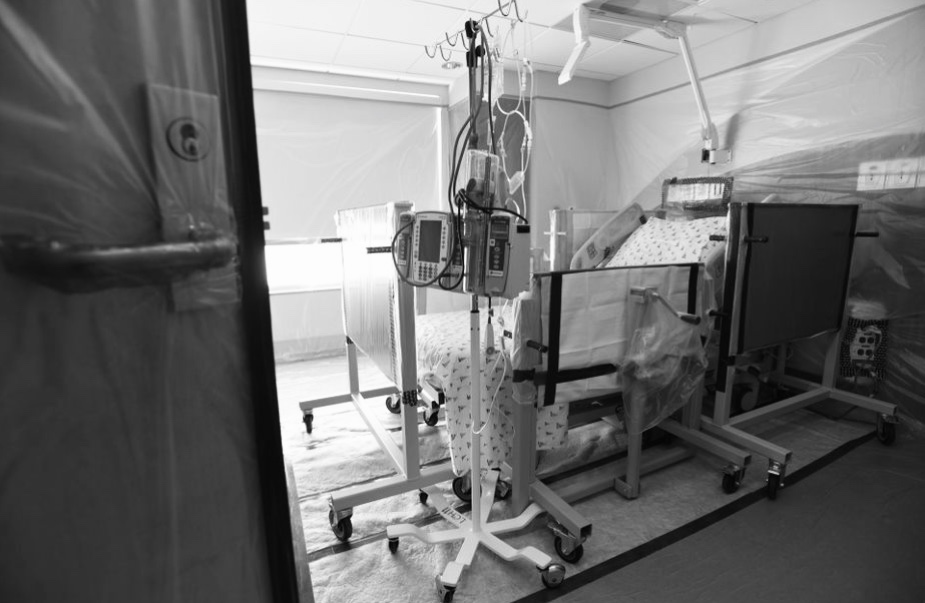
This therapy suite is extra special for me because I had the privilege of being one of Isabella’s doctors during her cancer journey. When it was time for MIBG, her family was uprooted and separated, as she had to go to another state for this treatment. Her legacy has made it so no other child will need to leave Charlotte for this type of care. What a true gift and long
Leading-Edge Treatments

We’re fortunate at Levine Children’s to be able to provide the most leading-edge treatments, including Phase I clinical trials. Before I became the medical director of the program, I led our developmental
No Child Should Have to Experience This
I’ll start here: childhood cancer is an awful disease and something no child should have to experience. We won’t stop until there is a 100% cure rate. But there has been substantial positive progress made over the years. In 1960, the survival rate for pediatric leukemia was 5-10 percent. Today, it is 80-90 percent. We’ve increased survival rates for neuroblastoma by 15-20%. Overall, 4 out of 5 patients who have childhood cancer will survive. That’s huge progress…although it’s not enough until we’re in a world with “no. more. cancer,” to quote Isabella.

We’ve also made huge advancements to the child’s treatment experience during this time. Kids are first and foremost, kids. We remember that throughout their treatment. We know more about emotional wellbeing and how stress and anxiety can have physical effects on anyone, but especially a child. That’s why it’s not just about the oncologist – it’s about the whole team, including child life specialists, social workers, navigators, psychologists and more.
But none of this would be possible without organizations like the Isabella Santos Foundation who provide philanthropic support to make these things possible. From clinical trials to medical equipment to interactive games to stickers and so much more: much of it is funded by donations and the kindness of people who want to help. Thank you for helping.
Day in and night out… being a pediatric oncologist is one of the hardest jobs in the world. Dr. Oesterheld is changing things for kids fighting cancer. He is doing everything he can to change pediatric treatment and save our children’s lives. But he can’t make his visions a reality without funding. He can’t build programs. He can’t create new clinical trials. Please help fuel his work by donating to thank him.
All photos/videos courtesy of Levine Children’s.
WHAT YOUR DONATION COULD FUND:
-$100 donation could purchase pipettes and petri dishes for the new Pediatric Cancer Translational Research Lab at Levine Children’s. This lab is going to be a game changer for pediatric cancer research right here in Charlotte. Research effects change. But we need the equipment to make it happen.
-$250 donation could help fund a novel clinical trial at the ISF Rare & Solid Tumor Program at Levine Children’s. Clinical trials are designed for all aspects of pediatric cancer: to improve survival rates, side effects, find the right combination of treatments, with the ultimate goal of less cancer and more time.
-$500 donation could help fund Next Gen Sequencing of rare tumors (rare tumor research) at the ISF Rare & Solid Tumor Program at Levine Children’s. This rare tumor research helps determine what’s happening inside a cancer tumor and how to attack it.
*** THROUGH MY EYES: THIS IS CHILDHOOD CANCER SERIES
9/2: We Have Stopped Making You Aware
9/3: Through My Eyes: This is Childhood Cancer
9/3: Through My Eyes: What Cancer Leaves Behind
9/5: Through My Eyes: Behind the Scenes with Aaron Plummer, Dad to RhabdomyosarcomaWarrior
9/6: Through My Eyes: What My Child About Cancer, What Really Scares This Cancer Mom
9/8: Through My Eyes: Week 1 Results
9/9: Through My Eyes: Behind the Mind of a Teenager Fighting Cancer & Social Anxiety
9/11: Through My Eyes: What It’s Like to be a Young Adult Living With Cancer
9/13: Through My Eyes: What It’s Like to be a Young Adult Supporting a Loved One With Cancer

